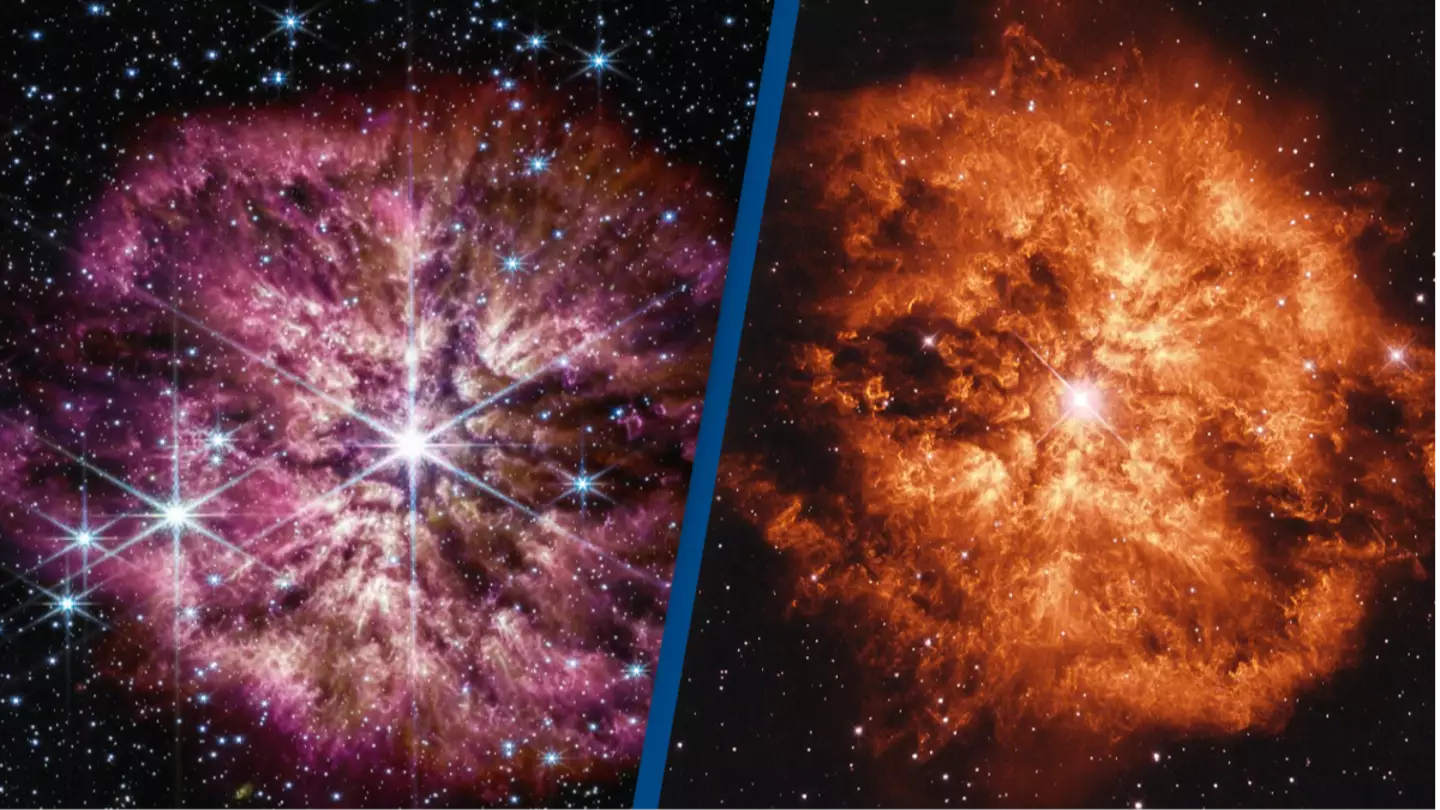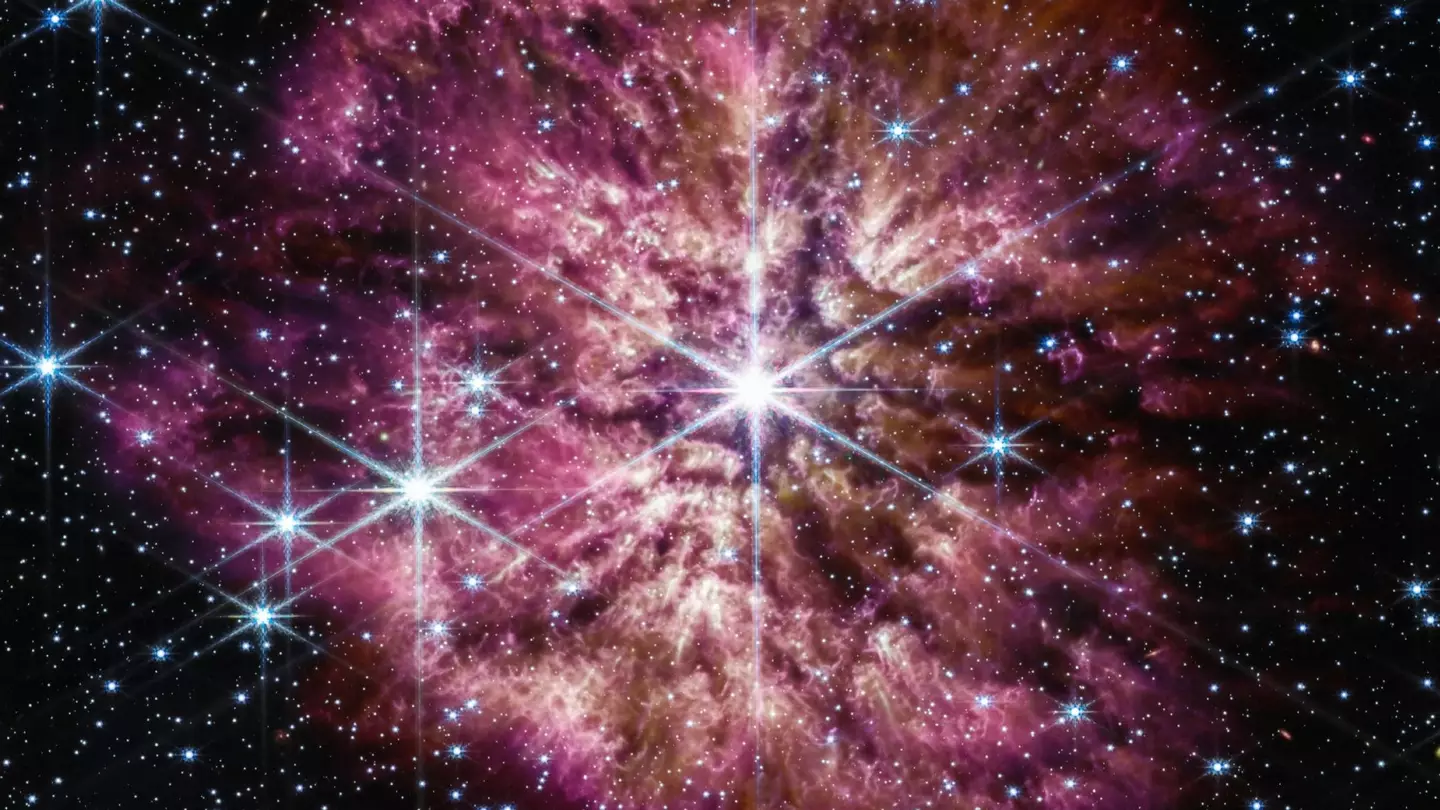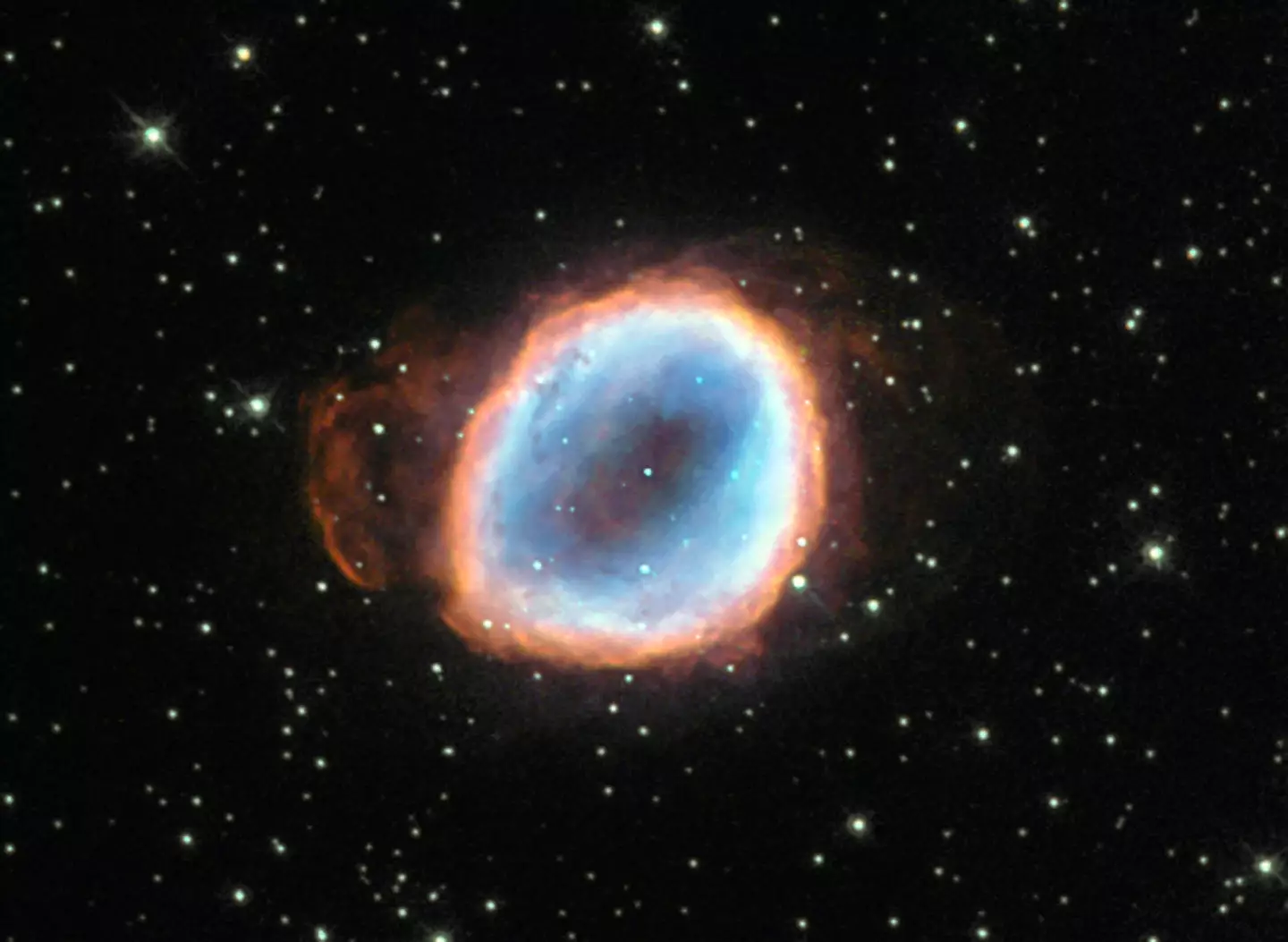
The James Webb Space Telescope (JWST) has captured rare footage of what a star on the cusp of death looks like.
The observation was revealed via NASA on Tuesday (14 March) at the South by Southwest conference in Austin, Texas.
JWST was only launched in late 2021, which means that the dying star image is one of the first stunning phenomena to be captured perfectly.
Using its infrared lens, the telescope recorded an image of gas and dust being flung into space by the huge dying star, Wolf-Rayet (WR) 124.
Advert
It’s thought that this spectacle is taking place 15,000 light-years away from Earth.
That’s roughly 5.8 trillion miles away, in case you were wondering.

The image was exclusively shared by NASA and sees a shimmering purple cast-off material that once comprised the burning star’s outer layer, creating 'halos of dust and gas'.
Advert
The dramatic image is a step up from the one originally taken by The Hubble Space Telescope (HST) a couple of years ago.
Before the JWST was launched, HST captured this transitioning star in 2015.
However, due to not having the technology to correctly capture delicate details - it appeared more like a flaming ball.

Advert
But now the destruction of Wolf-Rayet 124 can be seen in all its glory.
The exploding star sits in the constellation Sagittarius and it is thought to be 30 times larger than our own sun. And, according to NASA, it has already shed enough gas and dust to account for 10 suns - for now, at least.
Speaking about the JWST image, NASA Astrophysicist Amber Straughn said: “What we’re seeing in this beautiful new image at the very centre is a star."
“The light from that star has been travelling through space for about 15,000 years,” she continued. “It’s 15,000 light years away until it hit the detectors on the telescope.”
Advert
Straughn also explained what the explosion is you can see in the image, saying: “The material that you’re seeing around the central star that looks like dust, is dust.
“And, so, at the end of the star’s life, they shed their outer material, their outer layers out into the rest of the universe.”
“[In the image] that dust is spreading out into the cosmos and will eventually create planets. And this is how we got here, in fact,” Straughn concluded.
According to scientists, a star that is shedding material is in the final steps of exploding, which is also called going supernova.
Advert
But while the demise of Wolf-Rayet 124 cannot be seen by the naked eye, five planets will be available to see from Earth in March.
If you’re also interested in the destruction of space, NASA has shared an illustration of what galaxies look like when they collide.
